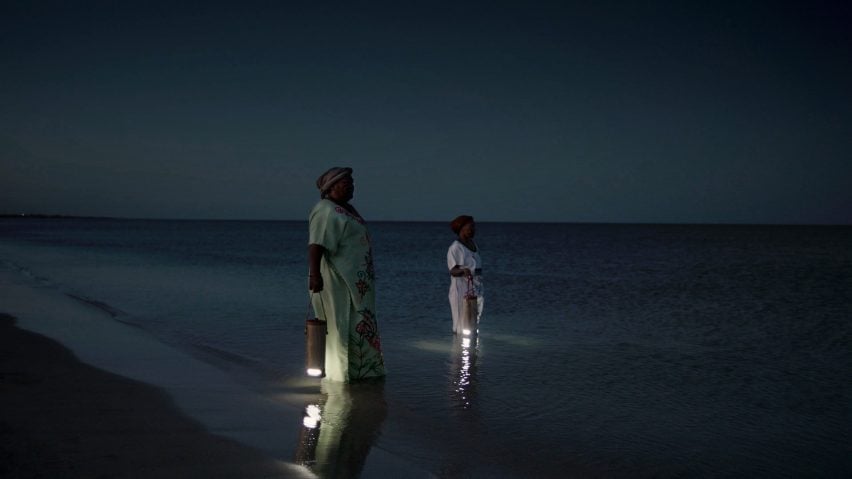
WaterLight is a portable lantern that can be charged with salt water or urine
Colombian renewable energy start-up E-Dina has developed a cordless light that converts salt water into electricity as a more reliable alternative to solar lamps in off-grid communities.
The portable device, called WaterLight, needs to be filled with 500 millilitres of seawater – or urine in emergency situations – to emit up to 45 days of light.
Acting as a mini power generator, the device can also be used to charge a mobile phone or another small device via its integrated USB port.
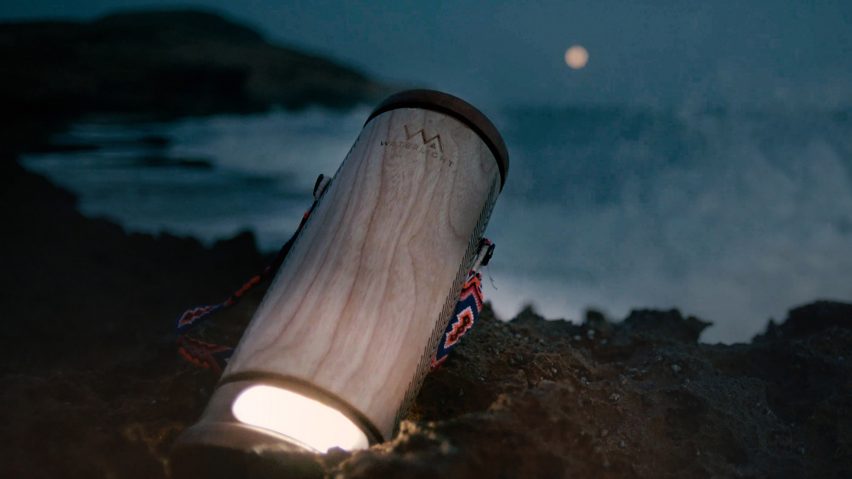
Created in collaboration with the Colombian division of creative agency Wunderman Thompson, the project was designed as a stand-in for solar energy, which is often used to supply remote locations but which is weather-dependant.
"WaterLight can be more efficient than solar energy lanterns because it regenerates instantly," said Pipe Ruiz Pineda, executive creative director of Wunderman Thompson Colombia.
"Once filled with water, the energy delivery is immediate while solar lanterns need to transform solar energy to alternative energy to charge batteries and they only work if there is sun."
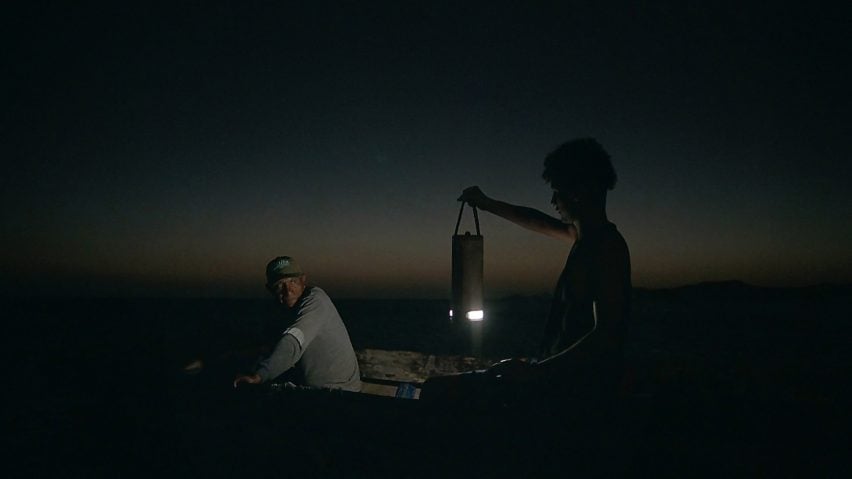
WaterLight works 24 hours a day through ionisation, which sees electrolytes in the saline liquid react with magnesium and copper plates on the interior of the lamp to produce electricity.
Although this is a long-established process, E-Dina has developed a way to sustain the chemical reaction over a prolonged period of time so that it can be used to power a light source.
"They patented a way of ionisation that lasts longer than any technology before," Pineda told Dezeen.
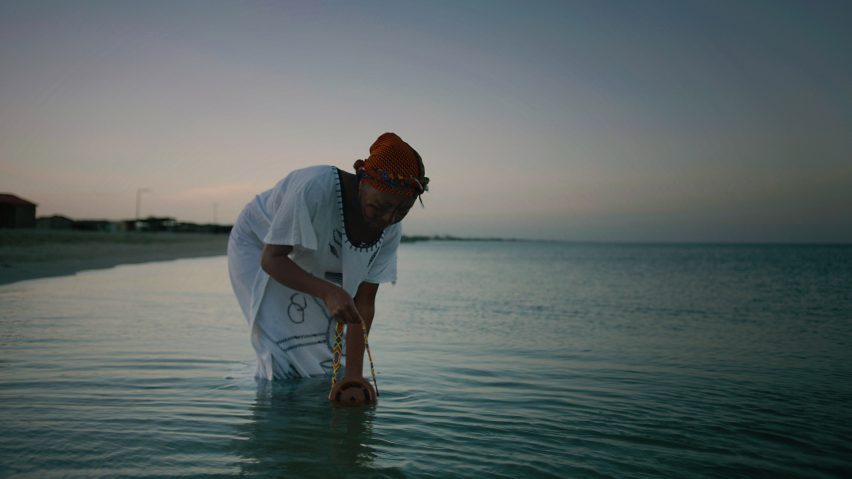
Throughout its life, one light can provide around 5,600 hours of energy, which equates to two to three years of use depending on how often it is needed.
The light has a cylindrical case made of Urapán wood with a circuit integrated into its base and a perforated cap on top that allows water to flow into the device while the hydrogen gas created during the ionisation process can escape.
After the salt particles have evaporated, the lamp can be emptied and refilled while the used water can be repurposed for washing or cleaning.
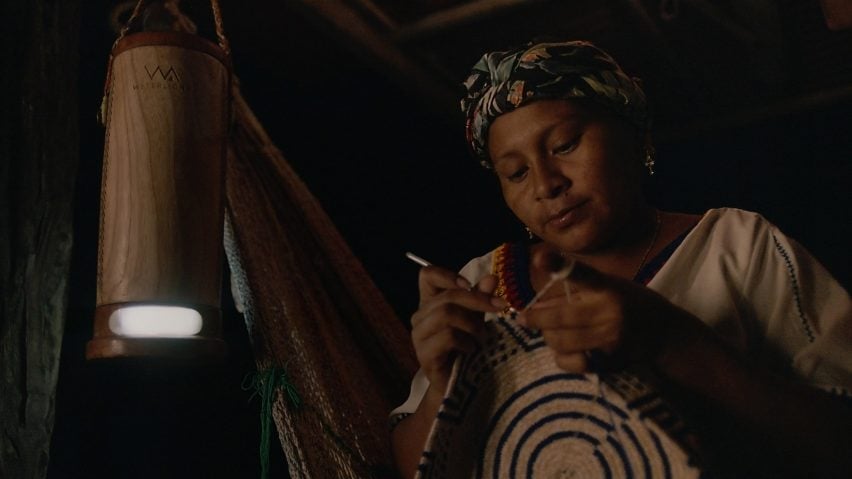
This current iteration of the lamp was designed specifically for the Wayúu people, an indigenous tribe living on the northernmost tip of South America where Colombia meets Venezuela.
"E-Dina is a Colombian company and we wanted to start with a local community with the problem of no access to electricity," Pineda explained.
"We choose the Wayúu community because they're a population that's been forgotten by the government."
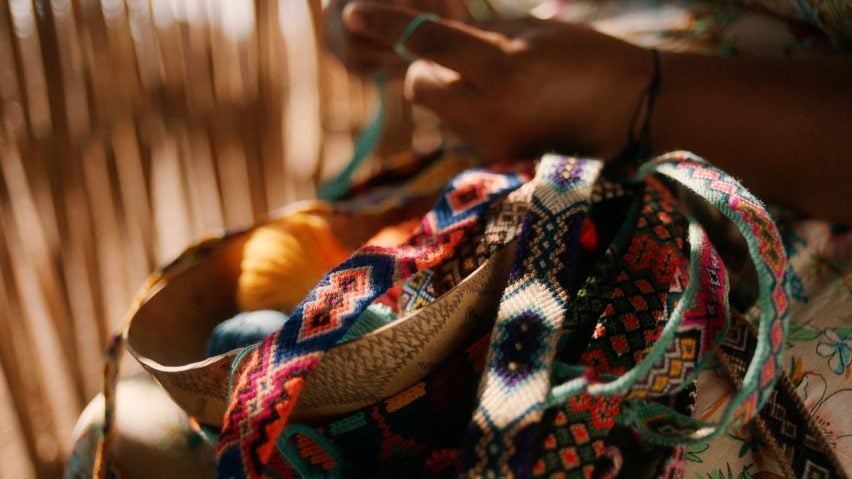
For centuries, the Wayúu have occupied the remote, desert landscape of the Guajira peninsula. Although removed from the rest of society, the area is surrounded on all sides by the Caribbean Sea, which offers a plentiful resource to power the WaterLight.
Wunderman Thompson worked to integrate the rich, cultural heritage of the tribe into the design of the lights, with traditional symbols and patterns carved into its wooden casing and the colourful carrier straps woven by local craftswomen using a technique that goes back to pre-colonial times.
"This generation of WaterLight was inspired by these traditions and the Wayúu artisans made the straps with their own hands," said Pineda.
Once it reaches the end of its life, Wunderman Thompson claims the lamp can be fully recycled.
The goal is to ultimately roll out a pared-back, mass-produced version of the WaterLight across the world to supply the 840 million people who currently live without electricity.
Pineda expects the design will be particularly useful in places like Syria, Sierra Leone and Somalia, which don't have a comprehensive power grid but have direct access to a coastline.

With a similar aim, the Little Sun project by artist Olafur Eliasson has been providing small solar lamps to people with limited access to reliable energy since 2012.
And just last year, Google sister company Loon deployed 35 solar-powered balloons over remote areas of Kenya to provide internet service to the local community.